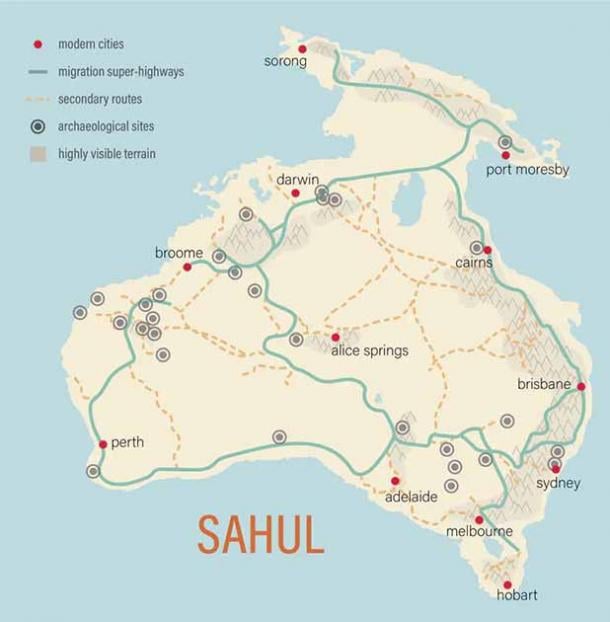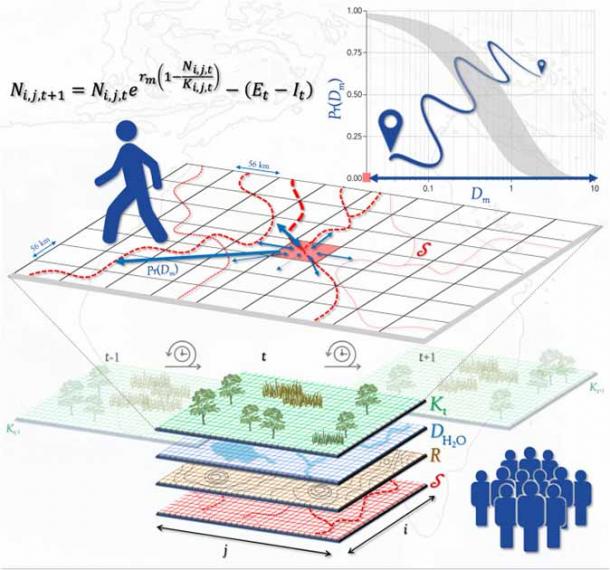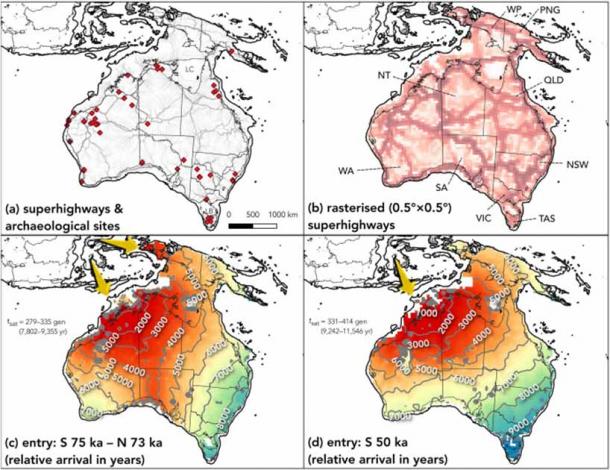
Virtual Reality Tracks 75,000-Year-Old Footsteps of Sahul Explorers
Newly published and ground-breaking research has revealed previously unknown information about the populating of the ancient supercontinent of Sahul, which once comprised Australia and New Guinea. This story begins around 75,000 and 50,000 years ago when about 3,000 brave Southeast Asians became the first humans to reach Australia.
According to a 2013 study published in Science, these “intrepid explorers” became the continent's founding population and the ancestors of Australia's aboriginal people. But the new research paper published in Quaternary Science Reviews has combined advanced demographic and wayfinding models to construct a timeline of migration across Australia.
- “Superhighways” of the Original Australians Uncovered by Virtual Migrant
- Ancient Ancestors Made a Large and Deliberate Migration to Australia
The study was led by the ARC Centre of Excellence for Australian Biodiversity and Heritage (CABAH), and was published under the title Directionally supervised cellular automaton for the initial peopling of Sahul. According to the researchers, the results are “surprising and have massive implications for understanding migration in other places and times.”

Map of the giant Pleistocene-era supercontinent known as Sahul, as it looked approximately 50,000 years ago. The green lines mark the primary travel routes or “superhighways” that emerged as result of billions of computer simulations. (Meg Davidson / Sandia National Laboratories)
Charting the Original Settlers of Ancient Sahul
Sahul is often referred to as either “Meganesia” or “Greater Australia.” All of these terms are simply alternative ways to describe a landmass that comprised what is today Australia, Tasmania and New Guinea during the Pleistocene Epoch, which took place around 2.6 million to 11,700 years ago.
Dr. Stefani Crabtree, a Fellow at the Santa Fe Institute and co-author of the new study, explained that it took “10,000 years” for the entire continent to be populated. Furthermore, the new research presented some of the challenges faced by the deeply-ancient ancestors of the Indigenous people of Australia.
According to their research, the ancestors of Australia’s Aboriginal people sailed from the island of Timor “between 75,000 and 50,000 years ago.” Later waves entered via western New Guinea, sparking a rapid southward population expansion into the Great Australian Bight, which is a large open bay off the central and western most parts of mainland Australia’s southern coastline.
These original settlers of Sahul explored northward from the Kimberley region and settled in New Guinea. They also pushed into the southwest and southeast of Australia, the new study found.

Schematic of combined model infrastructure and relationship among its major components from the study of the peopling of Sahul. (Bradshaw et. al. / CC BY-NC-ND 4.0)
Discovering Supercontinental Sahul Through Comparison
The new study was founded upon a so-called “comparison.” The scientists took two existing models for predicting the routes of Australia’s first settlers and married this data to the demographic structures of these early populations in Sahul. The results revealed an accurate approximation for “continental saturation” with much greater accuracy than has previously been achieved in this field of research.
Furthermore, Professor Crabtree explained that the new study accounts for “the topographical constraints of Sahul,” which all previous models had not considered. Therefore, the conclusions of this pioneering work present a much more “realistic estimation” of the peopling of the continent of Sahul, essentially because the research built in more variables.
Making a Virtual Continent to Recreate the Peopling of Sahul
The team of scientists used detailed topographical information and climate models of Sahul to electronically build what they describe as a “virtual continent.” Just like with Sims, and other strategic survival and expansion themed computer games, the scientists programmed population groups (bots) to navigate through the ancient landscapes.
The little AI (artificial intelligence) communities were tasked with finding water and conquering day-to-day hurdles like crossing rivers. In other words, the electronic groups were programmed to expand successfully across the continent of Sahul while their digital footsteps were tracked by the research team.

Combined model inputs and outputs graphic from the study of the peopling of Sahul. (Bradshaw et. al. / CC BY-NC-ND 4.0)
Blending Old Information to Squeeze Out New Sahul Data
The Sahul study’s lead author, Professor Corey Bradshaw, explained that the merging of the two existing models allowed the team to make “substantial advancements in nuanced interpretation and scientific progress.” However, Bradshaw stressed that the importance of factoring in “the wider human behavior, including social and religious customs.”
- Oceania’s Papua New Guinea: Forged in Volcanic Fire
- How to Get to Australia… More Than 50,000 Years Ago
It is suggested that the first people to successfully settle and expand across Australia “passed on cultural knowledge to subsequent generations.” The researchers think this was a key factor in the “slow” spread of people across the continent, answering “why” the ancestors of Australia’s Indigenous people took almost 10,000 years to navigate the continent and finally reach Tasmania.
The process of “combining models” that was applied in this study was focused on Australia, providing a higher resolution understanding of the migration routes and timings of Indigenous people exploring Sahul. Nevertheless, the team stressed that this novel method of analysis could be applied anywhere in the world, revealing hitherto unknown and crucial aspects of human migration across the planet.
Top image: Representational image of the peopling of the ancient supercontinent of Sahul. Source: intueri / Adobe Stock
By Ashley Cowie
















Comments
What does NOT add up is that the aboriginal Australians once had boat-building, seafaring abilities, but later lost them. That would NOT happen normally, and probably could only happen IF some event wiped out the culture that came in, with something happening (devolutionary) that resulted in a more primitive human supplanting them. Probably a similar story in the America’s, where the Columbian-era people lived in ruins and possessed precious metal artifacts, but demonstrated NO abilities to produce such things.
Nobody gets paid to tell the truth.